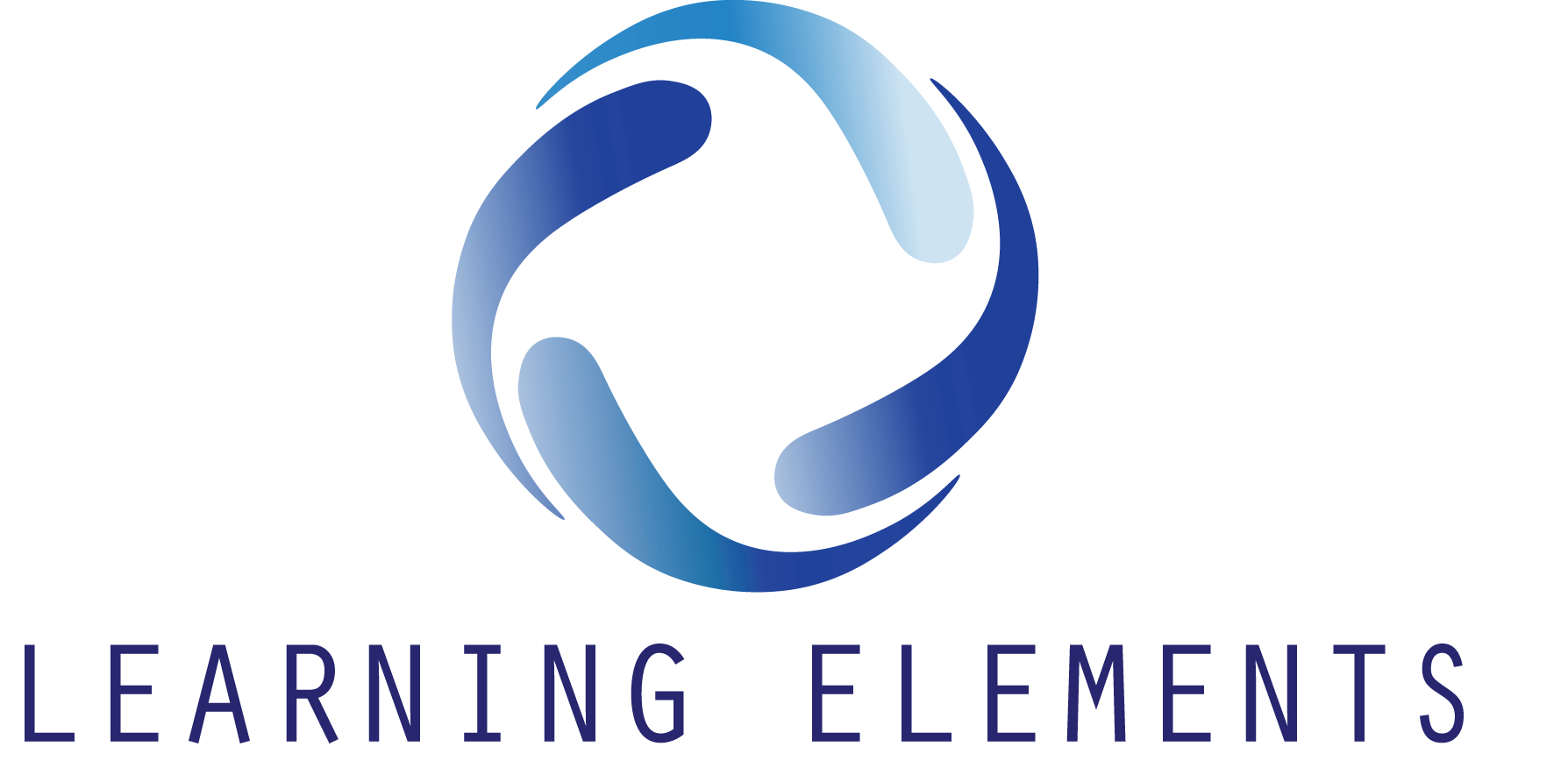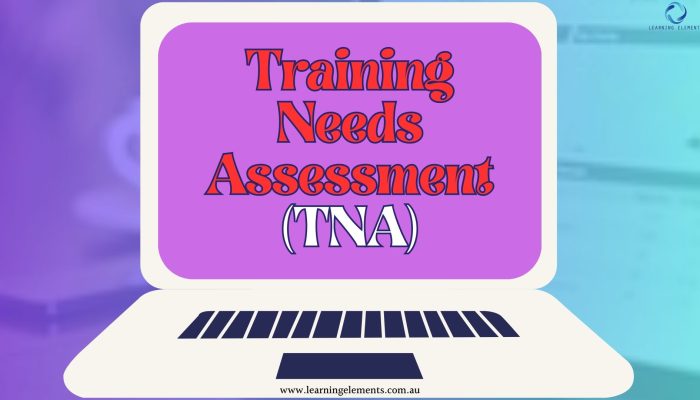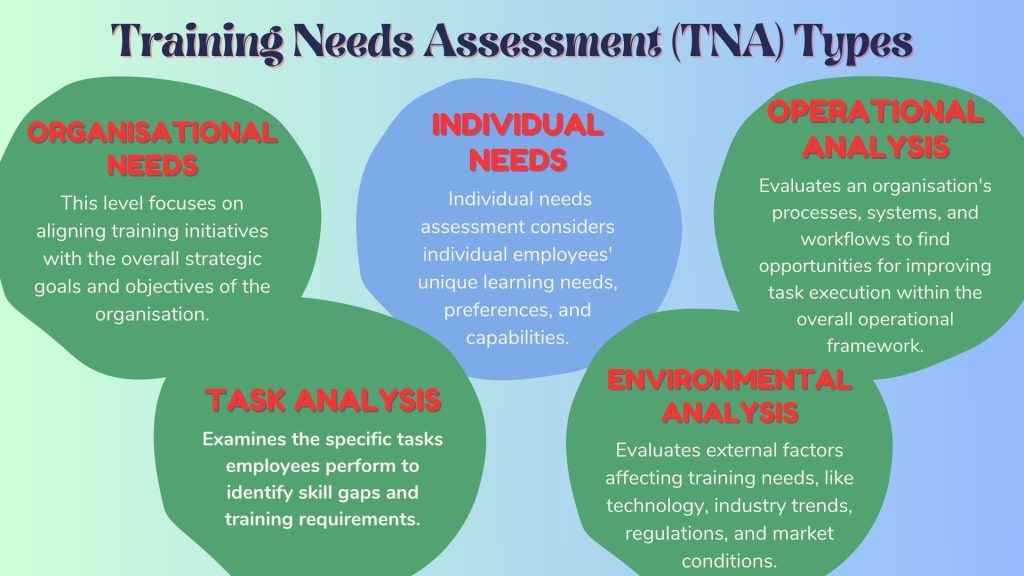Training Needs Assessment Solutions and Steps by The Learning Elements Team
The success of your organisation hinges on the proficiency and adaptability of your workforce. In today’s age, industries are rapidly evolving, and technology is advancing at breakneck speed; ensuring that your team possesses the required skills and knowledge is no longer just an advantage but a necessity. This is where Training Needs Assessment (TNA) emerges as a pivotal tool to use.
The Learning Elements team understands the significance of staying ahead in the business. Our dedicated expert team is committed to delivering bespoke Training Needs Assessment solutions that align perfectly with your organisation’s unique requirements. By conducting a thorough analysis of your team’s current skill sets and identifying areas for improvement, we pave the way for enhanced performance and sustainable growth.
What is a Training Needs Assessment (TNA)?
A Training Needs Assessment (TNA), also called a Training Needs Analysis, is a strategic evaluation process to identify the specific requirements and areas of improvement within an organisation’s workforce. It involves systematically analysing employees’ current skill sets and competencies compared to the skills necessary to fulfil their roles effectively. The primary objective of a TNA is to pinpoint the gaps between existing skills and desired capabilities, thus determining the precise training interventions needed to enhance employee performance and productivity. Organisations can gain valuable insights into their training needs through meticulous data collection and analysis, enabling them to effectively develop tailored learning solutions that address these requirements.
Methodology for Training Needs Assessment
Data Collection Methods:
- Utilisation of employee surveys: We design tailored surveys to capture essential insights into training needs and distribute them electronically for convenient access and timely responses.
- Conducting interviews: Our team adopts an interview approach involving key stakeholders such as department heads, team leaders, and HR personnel to comprehensively understand specific training needs and challenges. These semi-structured interviews offer flexibility while ensuring thorough coverage of current skill gaps, training priorities, and organisational goals.
- Observation techniques: Our team employed direct workplace observation techniques to witness firsthand insights into employee performance and behaviours. This approach yielded insights into skill proficiency, workflow dynamics, and areas for improvement, complementing survey and interview data.
- Document Analysis: We meticulously reviewed existing documentation, such as performance evaluations, training records, and job descriptions, to cross-reference and validate findings from surveys, interviews, and observations. This thorough review ensured a deep understanding of the organisation’s training needs and guided the development of targeted interventions.
Analysis Techniques:
- Quantitative analysis: Quantitative data collected from surveys and other sources were analysed using statistical techniques. This include frequency analysis to identify common patterns and trends. Correlation analysis was also employed to explore relationships between variables, providing valuable insights into the magnitude and direction of associations.
- Qualitative analysis: Qualitative data from interviews and open-ended survey responses were analysed using thematic analysis. This is to identify recurring themes, patterns, and insights related to training needs and priorities. This approach facilitated a deeper understanding of employee perspectives and preferences, enriching the overall analysis.
- Comparative analysis: We conduct a Skill Gap Assessment by systematically comparing existing skills to desired skills outlined in job descriptions and organisational objectives. We set benchmarks using industry standards, helping identify skill gaps and training needs effectively.
- Stakeholder feedback synthesis: Feedback from stakeholders was synthesised and categorised based on thematic similarities and relevance to training objectives. Common themes and areas of consensus were identified, providing valuable guidance for developing targeted training interventions.
Validation of Findings:
Data collected through surveys, interviews, observations, and document reviews were combined to strengthen findings and ensure reliable results. This comprehensive approach bolstered the TNA process and informed evidence-based decision-making.
Preliminary findings underwent expert review by subject matter specialists and senior management. Feedback and suggestions provided by peers were incorporated into the final TNA report to enhance its comprehensiveness and reliability.
We shared preliminary findings with stakeholders for validation and input through interactive feedback sessions and presentations. We prioritised stakeholder engagement, fostering collaboration and ensuring alignment with organisational goals and priorities.
Check out our courses to gain insight into the methodology and best practices of Training Needs Assessment (TNA).
What is a needs assessment for training needs?
A needs assessment for training needs involves systematically identifying gaps between the skills your employees currently possess and the skills they need to perform their roles effectively. It helps determine the specific areas where training interventions are imperative for enhancing overall performance and productivity.
This assessment explores employee competencies comprehensively, covering technical proficiencies and soft skills to understand training requirements thoroughly. Through meticulous data collection and analysis, our Learning Elements Team tailors solutions to address these identified needs effectively.
Some potential solutions Learning Elements offered during a TNA include:
- Training Design on Demand programs to address identified needs.
- Implementation of targeted learning interventions to bridge skill gaps.
- Development of training materials and resources specific to identified areas for improvement.
- Integration of technology-enhanced learning solutions to support training initiatives.
- Continuous evaluation and adjustment of training strategies based on feedback and performance metrics.
What are the 5 steps of training needs assessment?
- Identify Organisational Goals: We begin by understanding your company’s objectives and long-term vision.
- Analyse Existing Skills: Our team assesses the current skill sets within your workforce to identify gaps.
- Survey Stakeholders: We gather insights from key stakeholders to understand their perspectives and needs.
- Develop Training Objectives: Based on our findings, we establish clear training objectives aligned with your organisational goals.
- Evaluate Training Effectiveness: Continuous evaluation ensures that the training programs deliver the desired results.
What Are the 5 Types of Needs Assessment?
Organisational Needs Assessment:
Focuses on aligning training initiatives with the overall strategic goals of the organisation. It involves identifying training needs that support achieving of organisational objectives and ensuring that training programmes contribute to the organisation’s success.
Task Analysis:
Task analysis involves breaking down the tasks performed within a job or role to identify the specific knowledge, skills, and abilities required to complete those tasks effectively. It focuses on understanding the sequence of actions, inputs, and outputs involved in each task, as well as any relevant tools or resources.
Individual Needs Assessment:
Individual needs assessment considers individual employees’ unique learning needs, preferences, and capabilities. It involves identifying individual skill gaps, learning styles, and career aspirations to tailor training interventions to meet the diverse needs of employees.
Environmental Analysis:
Environmental analysis assesses external factors that may impact training needs, such as technological advancements, industry trends, regulatory changes, and market conditions. It helps organisations anticipate future training requirements and adapt their training strategies to address evolving environmental factors.
Operational Analysis:
Looks at the broader operational aspects of an organisation, including its processes, systems, and workflows. It aims to identify opportunities for improving the execution of tasks within the overall operational framework. Operational analysis may involve evaluating factors such as resource allocation, efficiency, and effectiveness of processes, and identifying areas where training interventions can enhance operational performance.
How do you assess the need for training?
Assessing the need for training involves a systematic approach to identify gaps in workforce knowledge, skills, and abilities. The Learning Elements team achieves this through various methods, including conducting surveys, interviews, observations, and performance reviews. By gathering data and insights from multiple sources, organisations can make informed decisions about their training priorities.
Book a free 30-minute consultation now to discover how our expert team can help assess and address your training needs effectively.


